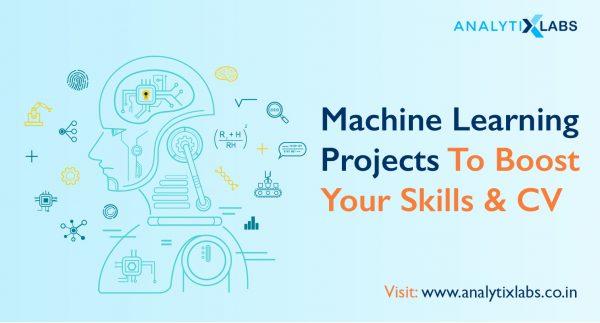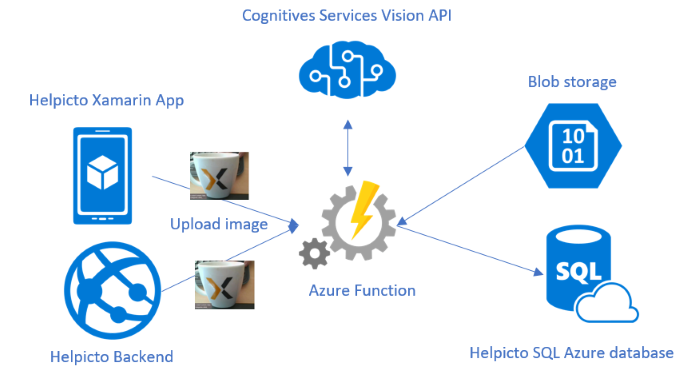
Cloud-based and on-premise AI are two options that you might be considering if you have made the decision to implement an AI solution. In-house ai, and the cost of implementing a full-blown ai solution. Some of these issues will be addressed in this article. Learn more about both the pros & cons. For those who aren't sure what AI means, our AI 101 guide can help.
Cloud-based ai
The cloud-based AI solution includes multiple layers. There is the infrastructure management layer which provides on-demand computing capabilities; the engineering management layer that standardises and allows for de-skilled deployment; as well as the engineering lifecycle layer that manages AI governance. In addition, the platform includes APIs that allow a large developer community to use predefined base models. A cloud-based AI system is more performant than a local AI solution. It consists of a group of virtual machines that can scale and run continuously.

Another issue is the high price of the cloud-based AI solution. It is not cheap to deploy the cloud, and in many areas, the Internet connection is either unstable or non-existent. AI can't be used in certain situations. Computer vision algorithms can be used to assist with precision farming. However, they are often located in remote areas where internet access is limited. Unmanned drones can't function in areas without reliable communications infrastructure. They are useless if they don’t get access to the AI clouds.
Outsourced vs. in-house ai
The main difference between an inhouse and outsourced AI solution is how much data annotation they do. In-house teams would need to label thousands upon thousands of data points and might not be able handle a large volume of data. Outsourced teams can concentrate on AI modeling development since they have dedicated teams for all data annotation tasks. The dedicated teams can accommodate more data, which will allow them to produce higher quality outputs.
Moreover, AI technology is an excellent choice for companies seeking to cut down on outsourcing expenses. AI technology can dramatically reduce IT outsourcing costs by automating and analysing data. You can even eliminate or reduce hidden costs. Additionally, it can train itself on a variety of tasks through machine learning techniques and doesn't need to be physically located. It can help reduce labor costs for suppliers. Both in-house and external AI solutions are viable options. However, it is important to carefully consider them before you commit to any supplier.
Cost of implementing a full-blown ai solution
A full-blown AI solution will cost more than traditional IT projects. The scope of the project is what determines the price. While an IT project's cost is based on personal experience, an AI project's cost is influenced by the scope of the project and the constraints that are set forth. Consistency in building AI projects will allow vendors to continue their discussions and create a solid foundation for future evaluations.

To make an AI project a success, you must have a deep understanding of the technology and its capabilities. While there is no one "right" way to implement AI, it is wise to start small. Set goals for your project and develop infrastructure to support AI technology. An expert can assist businesses in this process. The cost of an AI solution is dependent on its complexity and the resources available.
FAQ
What can AI do?
Two main purposes for AI are:
* Predictions - AI systems can accurately predict future events. AI can help a self-driving automobile identify traffic lights so it can stop at the red ones.
* Decision making. AI systems can make important decisions for us. As an example, your smartphone can recognize faces to suggest friends or make calls.
What is the current status of the AI industry
The AI industry is expanding at an incredible rate. It's estimated that by 2020 there will be over 50 billion devices connected to the internet. This will mean that we will all have access to AI technology on our phones, tablets, and laptops.
This shift will require businesses to be adaptable in order to remain competitive. Businesses that fail to adapt will lose customers to those who do.
The question for you is, what kind of business model would you use to take advantage of these opportunities? What if people uploaded their data to a platform and were able to connect with other users? Perhaps you could offer services like voice recognition and image recognition.
Whatever you decide to do in life, you should think carefully about how it could affect your competitive position. Although you might not always win, if you are smart and continue to innovate, you could win big!
How does AI work?
An algorithm is a sequence of instructions that instructs a computer to solve a problem. An algorithm is a set of steps. Each step must be executed according to a specific condition. Each instruction is executed sequentially by the computer until all conditions have been met. This continues until the final result has been achieved.
For example, let's say you want to find the square root of 5. It is possible to write down every number between 1-10, calculate the square root for each and then take the average. That's not really practical, though, so instead, you could write down the following formula:
sqrt(x) x^0.5
This means that you need to square your input, divide it with 2, and multiply it by 0.5.
A computer follows this same principle. The computer takes your input and squares it. Next, it multiplies it by 2, multiplies it by 0.5, adds 1, subtracts 1 and finally outputs the answer.
What are the potential benefits of AI
Artificial Intelligence is an emerging technology that could change how we live our lives forever. It's already revolutionizing industries from finance to healthcare. It's also predicted to have profound impact on education and government services by 2020.
AI is already being used for solving problems in healthcare, transport, energy and security. The possibilities are endless as more applications are developed.
What is it that makes it so unique? It learns. Computers can learn, and they don't need any training. Instead of being taught, they just observe patterns in the world then apply them when required.
AI's ability to learn quickly sets it apart from traditional software. Computers can process millions of pages of text per second. They can translate languages instantly and recognize faces.
And because AI doesn't require human intervention, it can complete tasks much faster than humans. In fact, it can even outperform us in certain situations.
A chatbot named Eugene Goostman was created by researchers in 2017. Numerous people were fooled by the bot into believing that it was Vladimir Putin.
This is a clear indication that AI can be very convincing. Another advantage of AI is its adaptability. It can be taught to perform new tasks quickly and efficiently.
Businesses don't need to spend large amounts on expensive IT infrastructure, or hire large numbers employees.
What do you think AI will do for your job?
AI will eliminate certain jobs. This includes drivers, taxi drivers as well as cashiers and workers in fast food restaurants.
AI will bring new jobs. This includes business analysts, project managers as well product designers and marketing specialists.
AI will simplify current jobs. This includes doctors, lawyers, accountants, teachers, nurses and engineers.
AI will improve efficiency in existing jobs. This includes jobs like salespeople, customer support representatives, and call center, agents.
Statistics
- In the first half of 2017, the company discovered and banned 300,000 terrorist-linked accounts, 95 percent of which were found by non-human, artificially intelligent machines. (builtin.com)
- While all of it is still what seems like a far way off, the future of this technology presents a Catch-22, able to solve the world's problems and likely to power all the A.I. systems on earth, but also incredibly dangerous in the wrong hands. (forbes.com)
- Additionally, keeping in mind the current crisis, the AI is designed in a manner where it reduces the carbon footprint by 20-40%. (analyticsinsight.net)
- A 2021 Pew Research survey revealed that 37 percent of respondents who are more concerned than excited about AI had concerns including job loss, privacy, and AI's potential to “surpass human skills.” (builtin.com)
- In 2019, AI adoption among large companies increased by 47% compared to 2018, according to the latest Artificial IntelligenceIndex report. (marsner.com)
External Links
How To
How to get Alexa to talk while charging
Alexa, Amazon's virtual assistant can answer questions and provide information. It can also play music, control smart home devices, and even control them. And it can even hear you while you sleep -- all without having to pick up your phone!
Alexa is your answer to all of your questions. All you have to do is say "Alexa" followed closely by a question. She will give you clear, easy-to-understand responses in real time. Alexa will become more intelligent over time so you can ask new questions and get answers every time.
You can also control connected devices such as lights, thermostats locks, cameras and more.
Alexa can be asked to dim the lights, change the temperature, turn on the music, and even play your favorite song.
Set up Alexa to talk while charging
-
Step 1. Step 1. Turn on Alexa device.
-
Open Alexa App. Tap the Menu icon (). Tap Settings.
-
Tap Advanced settings.
-
Select Speech Recognition
-
Select Yes, always listen.
-
Select Yes, wake word only.
-
Select Yes, and use a microphone.
-
Select No, do not use a mic.
-
Step 2. Set Up Your Voice Profile.
-
Select a name and describe what you want to say about your voice.
-
Step 3. Test Your Setup.
Followed by a command, say "Alexa".
Example: "Alexa, good Morning!"
Alexa will answer your query if she understands it. For example, John Smith would say "Good Morning!"
If Alexa doesn't understand your request, she won't respond.
-
Step 4. Restart Alexa if Needed.
Make these changes and restart your device if necessary.
Notice: You may have to restart your device if you make changes in the speech recognition language.